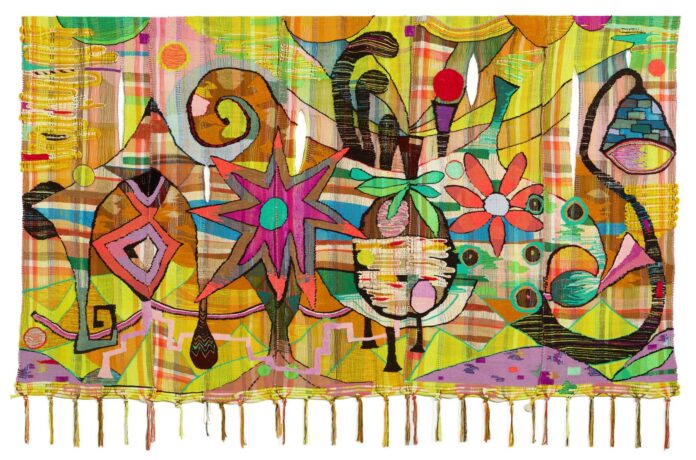In sculptural textile works that are at once vibrant, inquisitive, and effusive, artist Terri Friedman employs her experience with multiple mediums in the creation of her art. Today, the materials for Friedman’s works are fiber, but her approach reflects a broader background.
“I am a painter who uses the loom to paint, and I consider my palette and my words as part of my materials repertoire. My weavings feel spontaneous, but they are meticulously planned from composition to fiber choices. Weaving is very unforgiving. I can’t go back,” Friedman told 48hills.
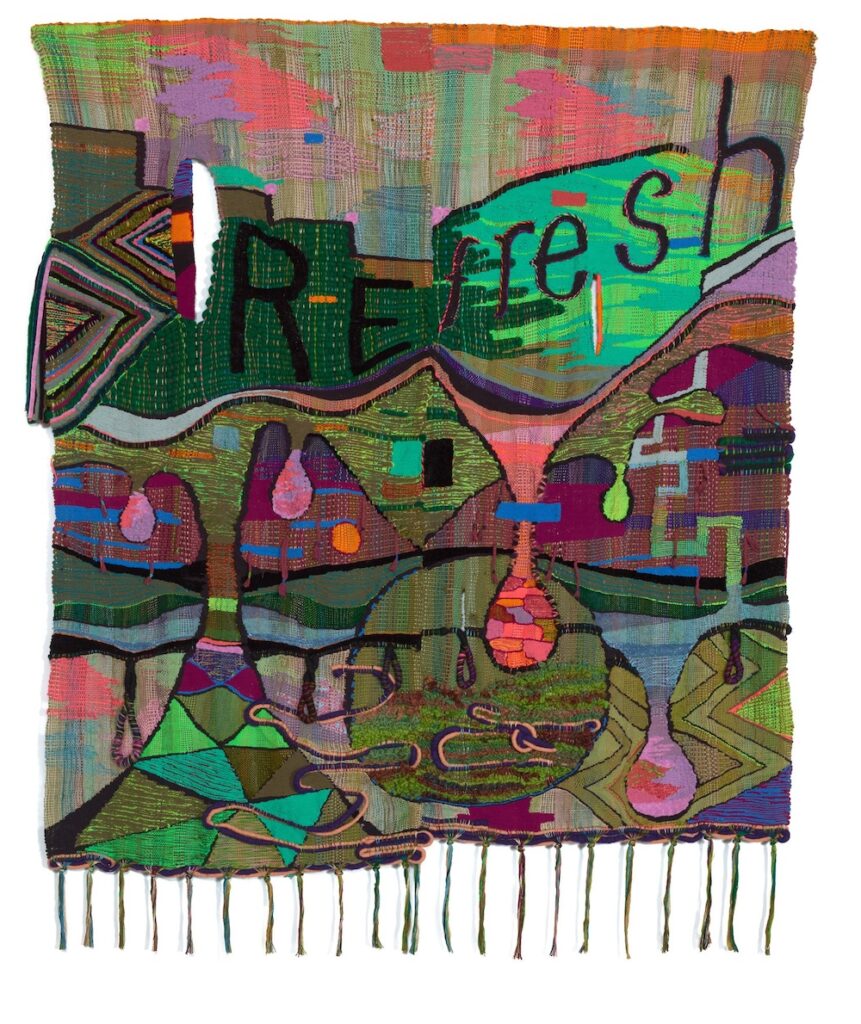
The arc of her career has been very long, in her estimation, and though she has always been a painter, Friedman has explored myriad ways to create without the traditional materials associated with that medium.
“I’ve roamed the gamut from kinetic water sculptures with circulating glitter water through clear tubing, to poured translucent paint on acrylic sheets, and now loom work,” Friedman said.
She cites numerous influences on her work. Growing up in a “colorful and eccentric” household in Denver, Colorado, her interior designer mother was an early influence. Artists Jessica Stockholder, Franz West, Arlene Schechet, and Sister Corita Kent are among the standouts who have inspired her over the years.
“I’m deeply inspired by Sister Corita Kent’s work that uses abstraction and words as protest. Politics are very personal for me, and I like to say my work is an attempt to make sense of personal and world events, exploring places where the political and emotional bodies intersect,” Friedman said.
As a young woman, Friedman went east to study at Brown University in Providence, Rhode Island (BA with honors, 1986), taking a leave of absence in 1983 to travel through Europe and work with artist Charles Simonds. At the time, he was preparing a retrospective for the Guggenheim Museum, and she assisted him in finishing a two-year project to be installed in the rotunda.
“For six months, I worked six days a week. This was when I realized being an artist is a lot of hard work, and I was all in. Of course, I also thought naively that if I worked hard, I would have a retrospective at the Guggenheim at age 40. Nonetheless, working with Charles inspired me to be a professional artist. It was a pivotal moment,” she said.
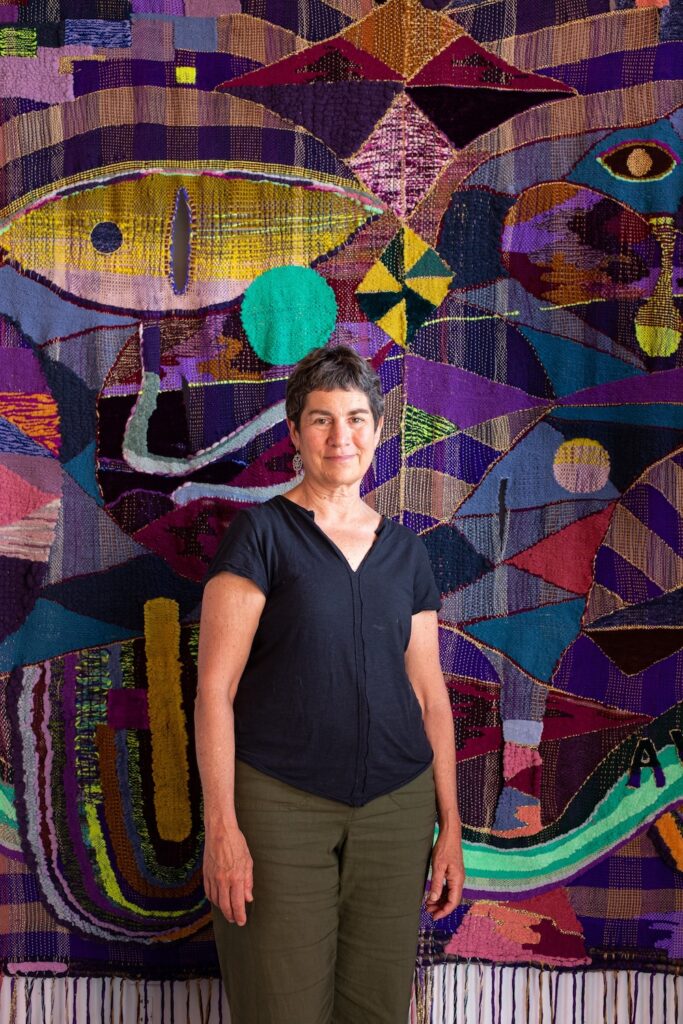
Another formative period was a journey taken in 1989 to India and Nepal to study with a Tibetan Thangka painter and an Indian poster painter, while also taking refuge in Buddhist studies.
“Going to India influenced my very vivid palette and my interest in Buddhism, the threads of which are woven throughout my life and art,” she said.
Friedman completed her MFA at Claremont Graduate School in Claremont in 1993 while living in Los Angeles. In 2000, Friedman moved to the Bay Area from Santa Barbara, where she was teaching at UCSB when her husband got a job with Pixar Animation Studios.
The shift to textiles came as an epiphany in 2014 when Friedman saw an enormous tapestry by Spanish painter Joan Miró (1893-1983) in Barcelona, prompting her to learn the craft.
“After 20 years, I made a scary and somewhat daring mid-career transition from painting and sculpture to weaving,” Friedman said.
A teacher at California College of the Arts for the past 25 years, Friedman is currently a resident of the East Bay city of El Cerrito. She appreciates not only access to nature and perfect weather but the myriad communities she feels connected to that thrive here: the arts, education, Buddhists, foodies, and gardens.
Regarding subject matter, Friedman says she has been interested in brain science as it relates to illness and mental health and the mind-body connection. Quoting neuropsychologist Donald Hebb, whose book The Organization of Behavior (1949) explores the concept of neuronal plasticity, Friedman says, “Neurons that fire together, wire together.” Lately, she has been thinking a lot about what can go right instead of what will go wrong.
“I heard a podcast with Jane Fonda, and she talked about the last trimester of life. On her 59th birthday she asked herself what could go right. Instead of fearing the last years, she imagined another story,” Friedman said.
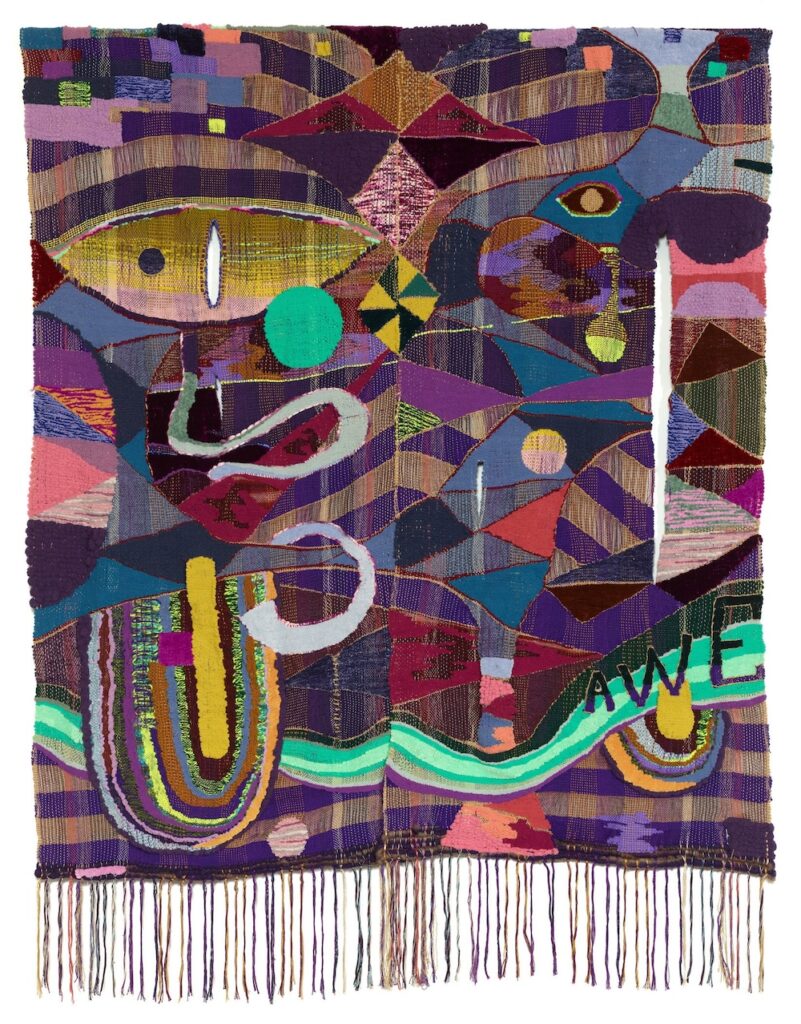
Both Friedman and her husband were diagnosed and treated for cancer within a three-year span. She says it influenced her work, though she is still uncovering precisely how. She adds that her mental and emotional job during this time was to lean into positive outcomes.
“That’s how I feel about the political situation in our country right now. I go low, I despair, but ultimately, I can’t go on if I don’t find something going right. Whether it is an unwanted diagnosis or greater issues like climate catastrophe or our country’s political instability, my thoughts naturally go to worst-case scenarios. The brain is wired for fight or flight, for negativity. I’ve been very interested in our nervous systems and how we navigate trauma,” she said.
More essentially, Friedman’s work is about repair. Neuroplasticity and the brain’s ability to reconstruct neural pathways is an area of research that informs her process. She loves the work coming out of the Greater Good Science Center at UC Berkeley and collaborated with them on a gratitude project for a seminar, crafting narratives that explore the tension between hopelessness and optimism.
“Gratitude can rewire the brain. In E NO UGH (2021), I explored the dual meanings of enough. Saying ‘I am enough as I am’ is a form of self-compassion. But it can also be an emphatic statement, that we have ‘had enough’—enough of the chaos out there in the world and our government, for example,” she said.
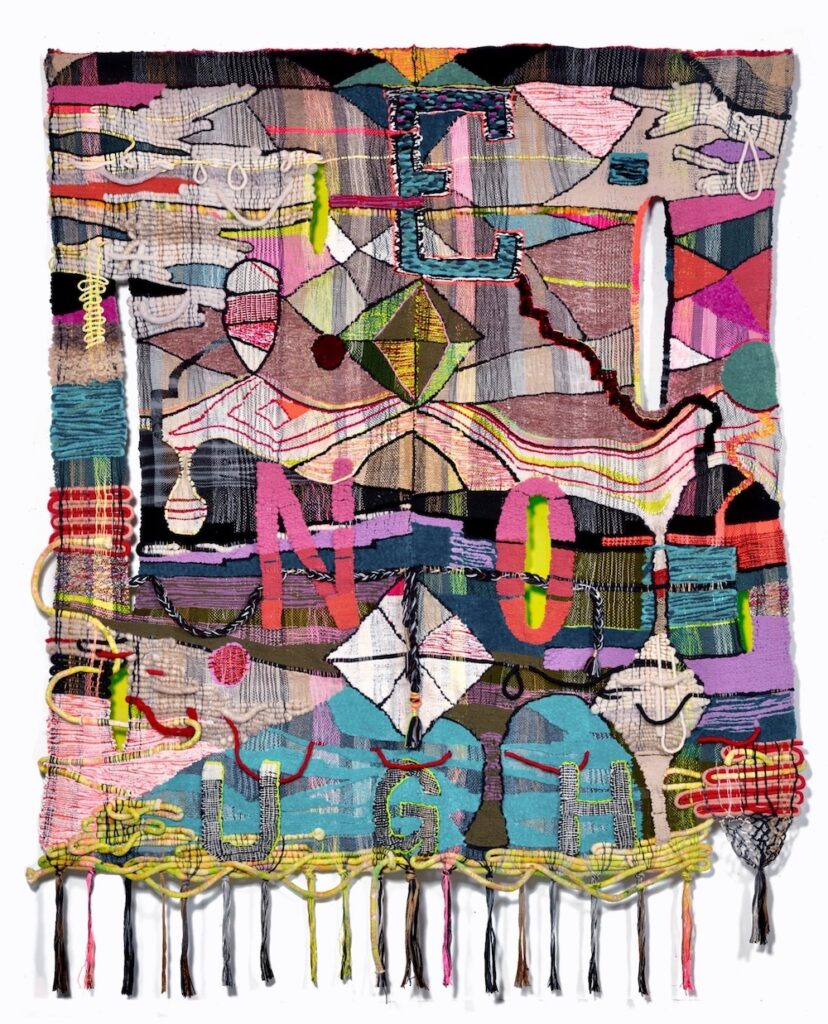
Friedman’s studio is a modern prefab structure that was built 15 years ago on the property where she has resided since 2000. Her studio has high ceilings, lots of light, and large doors that open onto her garden. Her day begins with daily meditation and a dog walk. Ambling out to her studio with a cup of Genmaicha green tea and podcasts loaded up with music, she gets down to it. In the space there are numerous boxes of fibers sorted by color, material, and size of threads, with surplus stored in her garage. As with tubes of paint, she mixes her colors and fibers to achieve particular hues.
Initially, Friedman draws on an iPad and selects fibers, making marks, lines, and saturating an idea with color as she would do as a painter, and recording notes on all the fibers she plans on using, along with the color palette. The end-product utilizes naturally died wools, neon acrylics, and other linear and tubular materials, often sewn together in panels, then embellished with embroidered or sewn details.
Her work has always been affected and inspired by world events. In college, it was women’s rights and the environment that captured her attention. Her most ambitious project thus far, a 60×20-foot art wall at the Berkeley Art Museum and Pacific Film Archive, was influenced by the divisive 2016 presidential election.
“My work is definitely a response to the world around me. Sometimes I say my weavings are posters of protest. An optimistic but agitated scream,” she said.
Friedman calls herself an introvert who loves being home. The pandemic gave her an excuse to be the most prolific she’s ever been. With a consistent practice, Friedman shows with several galleries, but is not represented by any one exclusively. Recent group shows include Inner Vision: Abstraction and Cognition at the Kleefield Contemporary Museum, CSU Long Beach, Step and Repeat at the Los Angeles Municipal Art Gallery, and The Golden Thread 2: A Fiber Arts Exhibition at 207 Front Street (Bravin Post Lee at The Seaport) in New York. Currently, Friedman’s work is included in the group show, Consider the Oyster, at Anthony Meier in Mill Valley through August 8.
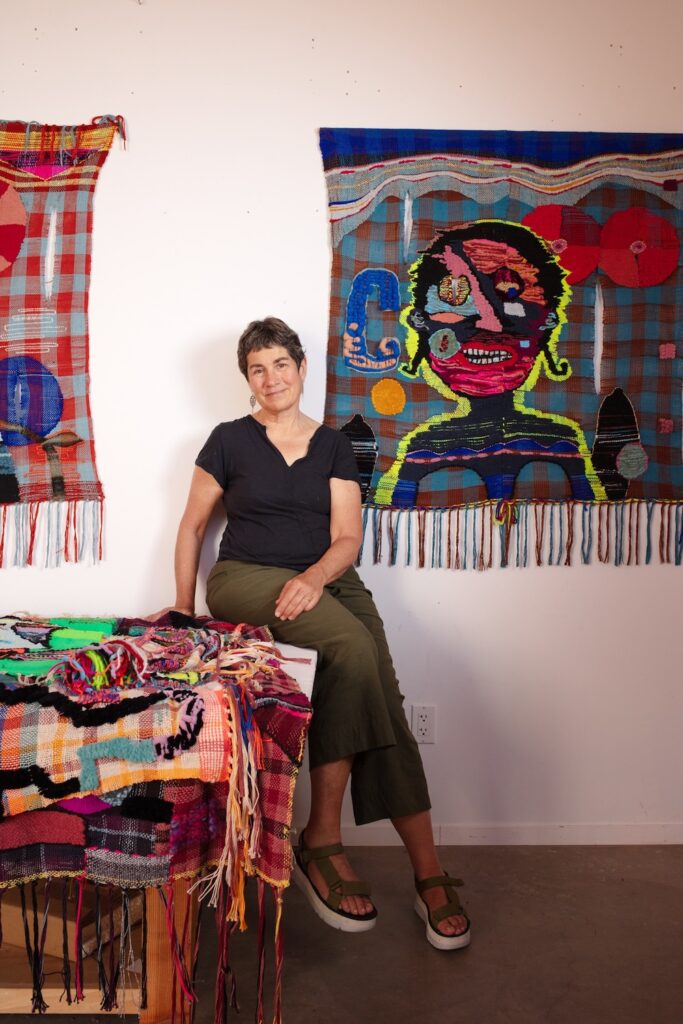
Family, engaging in her career as both teacher and mentor to students of CCA, gardening and attending to a primarily vegan whole foods diet, taking classes at Spirit Rock Meditation Center, swimming, hiking and immersing in nature, and travel are all important nutrients in her life.
“I also like to [provide] peer support to other cancer patients, as I had a lot of support during my treatment. And I join a laughter yoga group online weekly,” she said.
Through the medium of fiber, artist Terri Friedman aims to elicit positivity in a challenging climate. The concept that time is precious is well understood. She also recognizes that being an artist is a very solitary endeavor and that connecting with others is very meaningful.
“With my work, I want to inspire delight, joy, optimism, hope, and dare I say, awe . . . a feeling of being transported to a better place. I hope viewers of my work might feel like they want to touch and wrap themselves in the colors and fibers,” she said. “And smile and laugh and feel lighter somehow in this very dark world right now.”
For more information, visit terrifriedman.com and her pages on Instagram and Bluesky.


